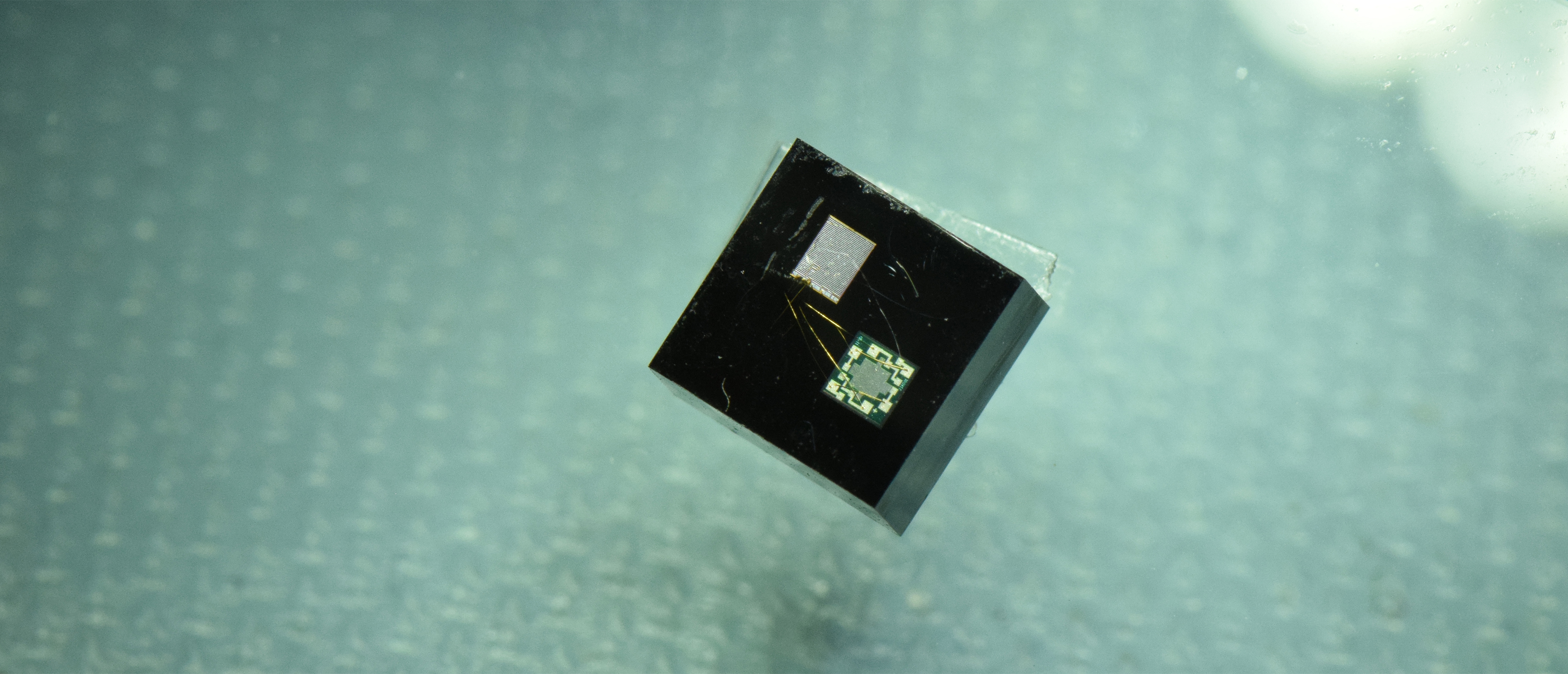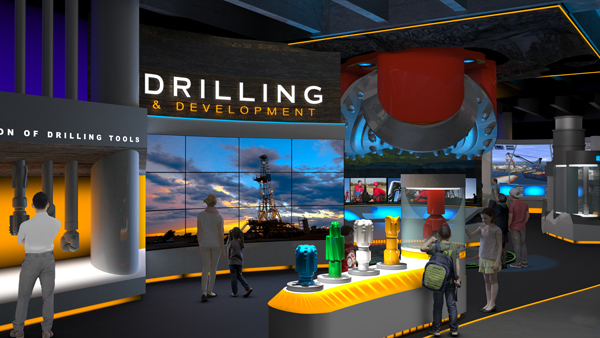Seed-sized U-M computers pumped into oil wells featured at the Houston Museum of Natural Science
Millimeter-sized computers log the temperature and pressure from deep within oil wells.

 Enlarge
Enlarge
Tiny computers developed at the University of Michigan will be featured for their role in oil exploration as part of a new exhibit at the Houston Museum of Natural Science.
The computers, which range from 1.5mm x 2.5mm to 5mm x 5mm – about the size of a sesame seed to a corn kernel – are small enough that they can be pumped into vertical and horizontal oil wells and travel through machinery without damaging the drilling equipment.
When inside the wells, sensors on the computers measure and log temperatures and pressures, which can help oil companies monitor the dynamic production conditions.

 Enlarge
Enlarge
“It’s very hard to understand what exactly is going on at the other end of a drill bit,” says David Blaauw, professor of electrical and computer engineering at U-M. “It’s kilometers deep. Even this very simple data about temperature and pressure along the pipeline is very useful.”
Oil companies typically feed a cable with sensors down into a well to measure temperature and pressure. This requires halting production, and cables can also have difficulty maneuvering through horizontal pipes. These computers, however, can be pumped in while the well is active and flow along any angle of pipe.
The computers are versions of the Michigan Micro Mote, or M3, and were developed by a team of professors in electrical engineering and computer science at Michigan, including David Blaauw, Dennis Sylvester, David Wentzloff, Anthony Grbic, and Jamie Phillips, and research scientist Inhee Lee. These faculty cover a range expertise from low power electronics to antenna and photovoltaic device design.
On learning about the M3 system, the Advanced Energy Consortium (AEC), an industrial research group from the Bureau of Economic Geology at the University of Texas, approached the researchers to collaborate on building similar computers capable of working in the harsh environment of an oil well.
It’s the very worst place on earth to put electronic equipment
David Blaauw
“It’s the very worst place on earth to put electronic equipment,” says Blaauw. “It’s extremely hot, it’s very high pressure, and it tends to have brine – a very aggressive salt mixture. If any of that hits your electronics, they will die.”
To withstand the harsh chemical environment, temperatures, and pressures, RTI, an independent non-profit research institute, encases the computers in an epoxy. The team also continues to develop better functionality.
“We’re still trying to shrink them,” says Blaauw. “And if we can sense hydrocarbons, conductivity of the fluid, and geolocate them when the computers are taking their readings, that would be very powerful.”
The computers will be showcased in the Wiess Energy Hall, an expanded exhibit at the Houston Museum of Natural Science. The Wiess Energy Hall is holding its grand opening on November 20, 2017.
The M3 computer is also featured at the Computer History Museum in Mountain View, CA.
 MENU
MENU 
